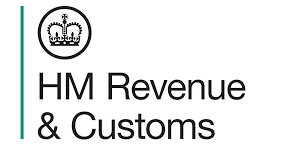HMRC SDLT: Stamp Duty Land Tax Exemption for Transfers in Financial Institution Resolutions
Stamp Duty Land Tax Exemption for Financial Institutions in Resolution
When a financial institution fails and enters resolution under the Banking Act 2009, section 66A of the Finance Act 2003 offers an exemption from Stamp Duty Land Tax (SDLT) on specific land transfers. This exemption applies to transfers from the failed institution to temporary entities, such as bridge banks or asset management vehicles, and is claimed via a land transaction return using relief code 28.
- Exemption applies to property transfer instruments to temporary bridge banks.
- Includes transfers to asset management vehicles.
- Covers transfers to temporary holding depositary banks.
- Applies to property transfers to temporary public ownership.
- Recognises third country resolutions for non-UK institutions.
- Reverse transfers may occur without SDLT if no consideration is given.
“`

Read the original guidance here:
HMRC SDLT: Stamp Duty Land Tax Exemption for Transfers in Financial Institution Resolutions
Stamp Duty Land Tax Exemption for Financial Institutions in Resolution
When a banking institution fails and is placed into resolution, there are special rules regarding Stamp Duty Land Tax (SDLT). Under section 66A of the Finance Act 2003, certain transfers of land from the failed institution to a temporary holding entity are exempt from SDLT. This guidance explains the types of transfers that qualify for this exemption and the process to claim it.
What is Resolution?
Resolution occurs when a failed financial institution is managed in a way to protect the interests of its customers and maintain financial stability. The Banking Act 2009 allows the authorities to use specific powers to stabilize the institution. As part of this process, assets may be transferred to ensure that the business continues effectively.
Types of Transfers Covered by the Exemption
The exemption from SDLT applies to specific kinds of property transfers involving land. These include the following:
- Property Transfer Instruments: This includes any document that transfers land from the failed institution to a temporary bridge bank. There are also supplementary property transfer instruments and ancillary instruments that may apply.
- Transfers to Asset Management Vehicles: Land can also be transferred to asset management vehicles under similar types of instruments, including supplemental share or property transfer instruments.
- Bail-in Resolution Instruments: If there is a bail-in resolution, property transfer instruments and related ancillary documents that transfer land to a temporary holding depositary bank are also exempt.
- Transfers to Temporary Public Ownership: Orders for property transfer that move land from the failed institution to temporary public ownership are also exempt from SDLT.
- Third Country Resolution Instruments: If a non-UK institution fails outside of the UK and has a branch in the UK, the transfer of land to a temporary resolution holding firm is included as well.
Claiming the SDLT Exemption
If a financial institution claims an exemption from SDLT, this must be done through a land transaction return or by amending an existing return. To indicate that the exemption is being claimed, the relief code 28 should be used when submitting the forms to HMRC.
Reverse Transfer Instruments
In some cases, after a bank’s condition has stabilised and the resolution process is ongoing, it may be necessary to reverse a previous transfer. For example, if excess land (or securities) was transferred to a temporary holding entity or a creditor, a reverse transfer instrument can be executed to return that excess land.
In such circumstances, if no consideration (money or equivalent value) is provided for the return of the property, the transfer will not be subject to SDLT. This means that the returned property is not charged for tax purposes, provided that it meets this condition.
Key Terms and Concepts
- Stamp Duty Land Tax (SDLT): A tax applied to property transactions in the UK. The exemptions allow certain transfers to proceed without incurring this tax.
- Failed Institution: A financial entity that cannot continue its operations due to insolvency or severe financial distress.
- Temporary Holding Entity: An interim body established to manage the assets or liabilities of the failed institution during the resolution period.
- Bridge Bank: A temporary bank set up to hold the assets of a failing bank and provide ongoing services to clients during the resolution process.
- Asset Management Vehicle: An entity that manages investments on behalf of others, often created during a resolution to handle the assets of a failed institution efficiently.
Understanding the Legal Framework
The provisions related to these SDLT exemptions are found in the Finance Act 2003. Section 66A specifically outlines the rules applicable during the resolution process of failed banks. Understanding these laws is vital for anyone involved in the management or restructuring of a failed financial institution.
Importance of Legal and Financial Advice
Engaging legal and financial advisors is essential for navigating the complexities of property transfers during a bank’s resolution. These professionals can help ensure compliance with all regulatory requirements, maintain accurate documentation, and correctly claim any available tax exemptions.
Implications for Stakeholders
The SDLT exemption can have significant implications for stakeholders involved in the resolution of a failing bank:
- Tax Savings: The exemption can lead to substantial savings on tax liabilities for the temporary holding entities involved.
- Asset Management: Efficient management of the assets during the resolution process can enhance the chances of recovering value for creditors and depositors.
- Investor Confidence: Transparent and effective resolution processes can help restore confidence in the financial system, encouraging investment and participation in future banking activities.
Practical Examples of Transfers
To better understand the application of these exemptions, consider the following scenarios:
- Example 1: A failed bank transfers all its properties and land to a temporary bridge bank as part of its resolution process. Since these transfers qualify under section 66A, they are exempt from SDLT.
- Example 2: A non-UK bank with a UK branch fails and is resolved outside the UK. The transfer of property held by the UK branch to a temporary holding firm is also exempt from SDLT, supporting the seamless transfer of international banking assets.
- Example 3: If the excess land transferred in resolution needs to be returned to the former owner without any payment, this reverse transfer does not incur SDLT, thereby effectively allowing for fair management of assets.
Overall Considerations for Financial Institutions
Financial institutions facing resolution must quickly grasp their rights and responsibilities under the law. Understanding the SDLT exemption can help organisations take the necessary steps to fulfil legal obligations while minimizing tax burdens. Collaboration with experienced professionals can lead to smoother transitions and help maintain stakeholder trust during potential transitions.







